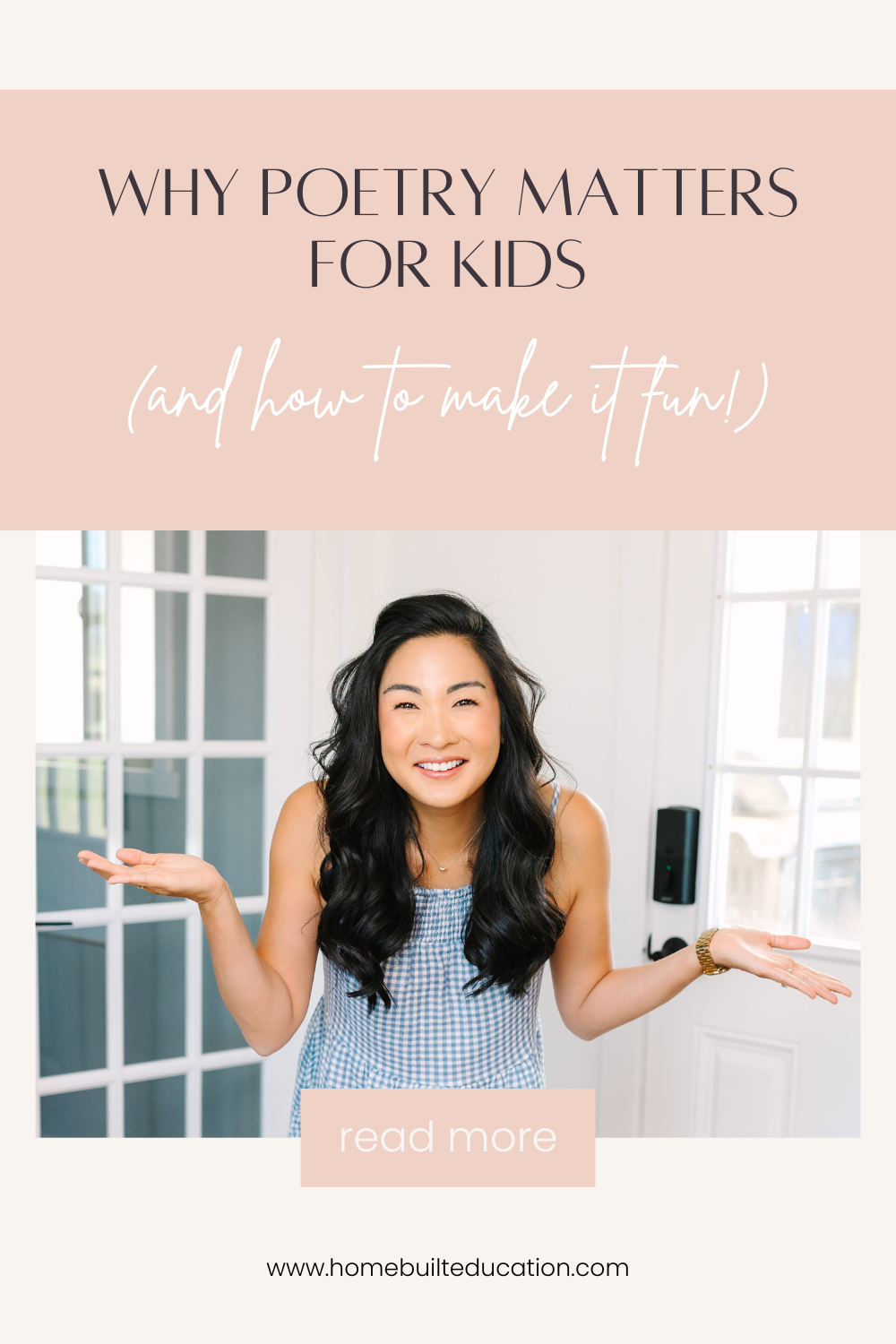Why Poetry Matters for Kids (and How to Make It Fun!)
Poetry often gets a bad rap. Somewhere along the way, it became that thing people either loved or hated in English class. But the truth is, that poetry isn’t just for literature lovers or rhyme enthusiasts. It’s for kids. All kids! And it’s one of the most powerful tools we can use to help them grow into thoughtful, creative, and confident learners. I know what you might be thinking—“Poetry? My kid barely wants to write a sentence without bribery.” But stick with me. Poetry isn’t about forcing words to rhyme or decoding Shakespearean sonnets (unless you’re into that). It’s about play. It’s about wonder. And it’s about giving kids the space to express themselves in ways that prose can’t always capture. Let's dig into all the reasons why Poetry matters for kids (and how to make it fun).
4 Reasons Why It Matters to Teach Poetry to Kids?
Let’s start with the big question—why does poetry even matter?
It Builds Language Skills.
Poetry is full of patterns, rhythms, and wordplay. Kids naturally love these things, even if they don’t realize it. Nursery rhymes? Poetry. Silly songs? Poetry. Knock-knock jokes? Yep, poetry again. All of these help develop vocabulary, grammar, and comprehension without feeling like a chore.It Boosts Creativity.
Poetry is a playground for the imagination. It doesn’t have to follow the rules (hello, free verse!), and that freedom encourages kids to take risks and experiment with words. They can create worlds, tell stories, or capture a feeling—all while building their confidence as writers.It Teaches Emotional Expression.
Let’s face it—big feelings are hard to explain, even for adults. Poetry gives kids a safe outlet to process emotions and explore what’s on their minds. Whether they’re happy, frustrated, or just curious, poetry allows them to give voice to their thoughts in ways they might not otherwise share.It’s FUN.
Seriously—poetry can be goofy, silly, and lighthearted. Limericks, tongue twisters, and rhyming games keep kids engaged while sneaking in learning. And if you can turn something educational into something fun? That’s always a win.
How to Make Poetry Exciting for Kids
Start with What They Know.
Kick things off with familiar forms—rhymes, riddles, and acrostics. Let them see poetry as approachable, not intimidating.Let Them Move.
Poetry doesn’t have to be read sitting still at a desk. Clap out rhythms, act out verses, or turn poems into songs. Movement keeps kids engaged and helps them connect with the words.Mix in Art.
Poetry and art go hand in hand. Have kids illustrate their poems, create blackout poetry with markers, or decorate pages for a keepsake poetry journal.Write Together.
Model the process by writing your poems alongside them. Show them it doesn’t have to be perfect—it just has to be theirs.
Ready to Get Started?
If you’re looking for an easy way to introduce poetry into your homeschool or daily routine, check out my Navigator Poetry Bundle for ages 9–11. It’s packed with 58 pages of interactive worksheets, guided prompts, and creative activities that make poetry fun and meaningful. Plus, it doubles as a keepsake your child can treasure!









